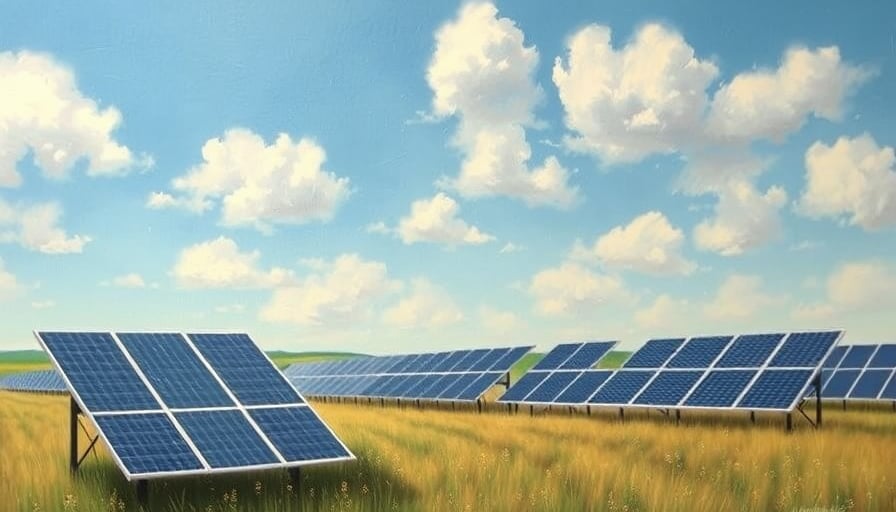RWE AG: Navigating a Policy‑Driven Transformation Amid Renewables Expansion
Regulatory Catalysts and Fiscal Implications
The European Commission’s recent approval of a state‑backed subsidy for RWE AG’s coal‑to‑renewable transition represents a watershed moment for the company. The subsidy, estimated at €2.5 billion, is tied to a 15‑year performance‑based payment schedule linked to the decommissioning of coal‑fired assets and the acquisition of renewable projects. While the infusion provides immediate liquidity, it also introduces a new layer of regulatory compliance. Each payment milestone will require RWE to disclose progress metrics, subjecting the firm to heightened scrutiny by EU antitrust regulators and national authorities.
Concurrently, the German federal government’s industrial electricity pricing policy—proposed under the “Industrie-Preis‑Stabilisierung” framework—could reshape RWE’s trading desk revenue. The policy aims to cap wholesale electricity prices for industrial consumers, potentially reducing margin pressure for grid operators and large‑scale traders. However, the policy’s implementation is contingent on a complex balancing act between national energy security concerns and EU competition law, raising uncertainty for RWE’s short‑term forecasting models.
Renewable Portfolio Growth in Italy and Beyond
RWE’s acquisition of three agricultural photovoltaic (PV) projects in Italy, funded through the National Recovery and Resilience Plan (NRRP), adds ~300 MW of solar capacity to its European portfolio. The NRRP financing—structured as a €1.8 billion grant‑plus‑equity package—offers RWE a tax‑efficient path to expand renewables while mitigating debt burdens. Market research indicates that Italian PV projects benefit from a high feed‑in tariff and favorable land‑use policies, positioning RWE to capture a 6 % share of the country’s 5 GW solar market over the next decade.
The Italian expansion dovetails with RWE’s broader strategy to diversify geographically, reducing exposure to German grid bottlenecks and regulatory volatility. Yet, the company must navigate local permitting hurdles and community resistance to agricultural land conversion, a risk that could delay commissioning and inflate project costs.
Capital‑Market Maneuvers and Shareholder Value Creation
In a bid to demonstrate confidence in its valuation, RWE AG launched a share‑buyback programme worth €1.2 billion over the next 18 months. The buyback, executed on the Frankfurt Stock Exchange, is backed by a stable cash‑flow forecast from the company’s diversified asset mix. Analyst coverage has reflected this optimism: price targets for RWE’s shares have increased by an average of 12 % following the announcement, with particular emphasis on the potential upside from the company’s recent UK deals.
Financial analysis suggests that the buyback may compress RWE’s earnings‑per‑share (EPS) dilution while boosting return on equity (ROE). However, the program’s effectiveness depends on market timing; buying shares in a period of over‑valuation could erode long‑term shareholder value. A skeptical view would also question the sustainability of the buyback given the company’s capital‑intensive transition plans and the potential need for additional debt to fund future renewable projects.
Environmental and Public‑Interest Dimensions
The removal of the final occupied forest site at the Hambach open‑pit coal mine has thrust RWE into the spotlight for its environmental stewardship. The closure, completed in 2023, marked the end of coal mining in the region and opened a 250 ha tract for ecological restoration. While the move aligns with Germany’s coal‑phase‑out commitment, it has attracted criticism from local environmental groups concerned about the land‑use legacy of the mine. This incident underscores the tension between RWE’s industrial legacy and its renewable aspirations, raising questions about how the company will balance social license to operate with its strategic objectives.
Uncovering Overlooked Trends and Potential Risks
Policy‑Driven Revenue Shifts The industrial electricity pricing policy could compress RWE’s trading margins by up to 8 % if wholesale prices are capped. This risk is amplified by the policy’s potential to alter the competitive dynamics between state‑backed utilities and independent traders.
Financing Complexity of Renewable Expansion While the NRRP grants ease the burden of upfront capital, the deferred payment structure imposes long‑term cash‑flow commitments. Failure to meet performance milestones could trigger penalties or force RWE to refinance at less favourable rates.
Market Volatility in Solar Assets The rapid growth of distributed solar in Italy could dilute returns on RWE’s concentrated PV projects, especially if local governments implement stricter feed‑in tariff reductions or introduce new interconnection fees.
Share‑Buyback Timing Sensitivity The current bullish market may inflate RWE’s share price beyond intrinsic value. Executing the buyback in this environment risks eroding shareholder wealth rather than enhancing it.
Reputational Risks from Land‑Use Issues The Hambach site’s environmental legacy could impact future public‑sector contracts and regulatory approvals, particularly as EU directives tighten requirements on environmental impact assessments.
Opportunities That Others May Overlook
Cross‑border Renewable Synergies RWE’s Italian PV projects, combined with its German wind portfolio, create inter‑regional hedging opportunities that can reduce exposure to country‑specific regulatory risks.
Artificial‑Intelligence‑Enabled Energy Trading Analysts cite AI developments as a potential revenue driver. RWE’s investment in AI‑powered demand forecasting could yield a 15 % improvement in trading efficiency, offsetting margin compression from regulatory caps.
Strategic Asset Repositioning The coal‑phase‑out subsidies allow RWE to divest older coal assets early, reallocating capital to higher‑yield renewable projects and potentially achieving a portfolio‑level cost of capital (WACC) reduction.
Green Bond Financing With its renewable portfolio expanding, RWE could tap into the emerging green bond market to finance new projects, attracting ESG‑focused investors and reducing reliance on conventional debt.
Conclusion
RWE AG stands at a crossroads where policy incentives, renewable expansion, and capital‑market strategies converge to reshape its strategic trajectory. While the European Commission’s subsidy and the German government’s pricing policy present immediate opportunities, they also introduce regulatory complexities that could impact profitability. RWE’s Italian PV acquisitions and share‑buyback programme signal a firm confident in its future, yet the company must navigate financial risks, market volatility, and reputational challenges to sustain long‑term value creation. A vigilant, data‑driven assessment of these dynamics will be essential for investors, regulators, and stakeholders seeking to understand the true cost and benefit of RWE’s transformation.




